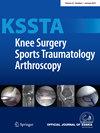Poor side-to-side symmetry limits the use of the contralateral limb as a reliable reference for guiding coronal positioning and alignment in total knee arthroplasty
Abstract
Purpose
To assess the symmetry of coronal alignment in the lower limbs of patients with knee osteoarthritis to evaluate whether the contralateral lower limb can serve as a reliable reference for guiding coronal positioning and alignment in total knee arthroplasty (TKA) surgery.
Methods
This is a multicentric cross-sectional observational study. Preoperative full-leg weight-bearing radiographies from patients with knee osteoarthritis treated with a TKA between 2022 and 2024 were analyzed. Radiological parameters were measured in both lower limbs: medial proximal tibial angle, tibial mechanical angle (TMA), lateral distal femoral angle, femoral mechanical angle (FMA), hip–knee–ankle angle (HKA) and Kellgren–Lawrence. Lower limb coronal symmetry was assessed using the HKA, coronal plane alignment of the knee (CPAK) and phenotypes classifications. The relationship between concordance rates and osteoarthritis severity and symmetry was also analyzed.
Results
Seventy-six patients were included. The operated-to-contralateral concordance for the HKA classification was 57%. It was higher when the operated knee was neutral (81%), compared to varus (58%) or valgus (27%). The CPAK concordance was 38%; it was similar across different CPAK types. The phenotype classification concordance was only 11%; 30% for the HKA parameter, 39% for FMA and 34% for TMA. There was no relationship between osteoarthritis severity or symmetry and coronal concordance rates.
Conclusions
Patients with knee osteoarthritis have poor side-to-side symmetry in lower limb coronal alignment. The concordance rate was 56% for the HKA classification, 39% for the CPAK classification and 11% for the phenotype classification. Therefore, the contralateral lower limb may not be a reliable reference for guiding coronal positioning and alignment in TKA surgery.
Level of Evidence
Level III.


 求助内容:
求助内容: 应助结果提醒方式:
应助结果提醒方式:


